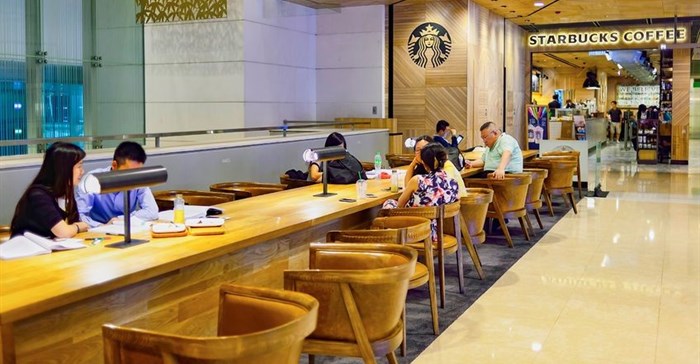
The increasing presence of F&B options in shopping centres – often accounting for more than 20% of units in new and redeveloped schemes in more mature markets – is being driven by rapid global growth in consumer spending on eating out, according to a new report from Cushman & Wakefield.
All four global regions examined in the report are forecast to experience growth in F&B expenditure. Based on data from Oxford Economics, consumer spending is forecast to nearly double in the Middle East and Africa ($182.5 billion to $363.5 billion) and more than double in Asia Pacific ($1,052 billion to $2,296 billion). As such, F&B spend is forecast to grow at an annual average of 7.4% up to 2026 in both regions.
As spending increases, customer expectation does too. Once-ubiquitous food courts, made up of common seating areas surrounded by fast food outlets, are a dying breed. While mainstream brands – with ability to pay higher rents – still dominate, landlords are recognising the importance of diversity and other concepts, such as the food hall, have evolved, while there is also a move towards creating different zones within shopping centres.
However, Cushman & Wakefield believes there is latent demand for more non-mainstream international food hall marketplace concepts, which combine restaurants with food and beverage counters and bakeries, along with the sale of cooking-related products and even cookery schools to add ‘edutainment’. Currently, only a handful of international players offer such a format and there is scope for more high-quality operators to emerge and enter new markets.
Nomzamo Radebe, CEO of JHI, part of Cushman & Wakefield Excellerate, notes, “South Africa has the most developed F&B market in Africa, with international brands continuing to make inroads into the country. International brands are providing increased competition for domestic operators. A rising population of young people in Africa and the Middle East is attracting more international food and beverage brands. Growth in sales in the F&B sector of 5.6% is expected between 2017 and 2020 in South Africa.
“The tie-in between shopping and eating is stronger than ever and can be seen in the significant growth of F&B outlets in shopping centres in recent years. This is a trend that looks set to continue. We are seeing a growing number of shopping centre owners viewing F&B as a key differentiating component for the success of their retail centres, and investing in creating more exciting F&B offerings for customers. This responds to consumers’ growing interest in food culture while also adding to the experience and entertainment people today want from their visit to a shopping centre.”
• The rising population of young people is attracting more international brands.
• Diversification away from oil dependency towards other sectors, such as tourism, will support strong F&B growth over the medium to longer term.
• South Africa has the most developed F&B market in Africa, with international brands continuing to make inroads into the country.
• Operators such as Starbucks and Krispy Kreme are providing increased competition for domestic operators.
• Saudi Arabia is expected to see the strongest growth in sales in the F&B sector between 2017-20, with average annual growth of 8.8%. More modest growth of 5.6% is expected in South Africa and the UAE.